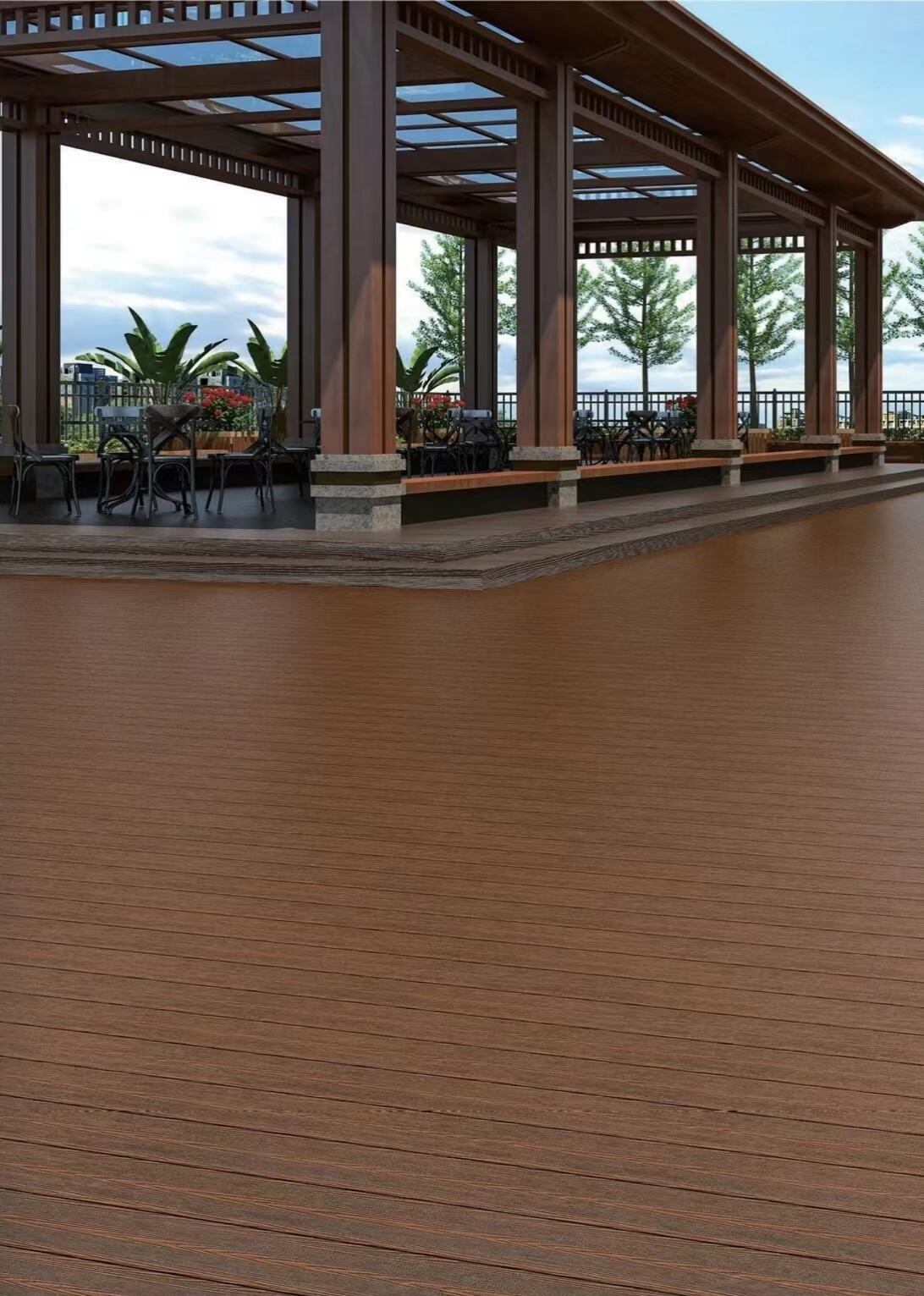Алуминиев профил в съвременно строителство и архитектура
Приложения на алуминиеви профили в прозоречни рами, врати и фасади
Алуминиевите профили имат голямо значение за фасадите на съвременните сгради, тъй като осигуряват добра якост, без да са твърде тежки. Екструдираните форми задържат големите стъклени панели в системите от завесни стени и създават чисти линии, които архитектите харесват. Когато става въпрос за топлинната изолация, прозорците с термично разцепени алуминиеви рамки намаляват топлинните загуби с около 70 процента в сравнение с обикновените рамки. Това ги прави предпочитан избор както за жилищни, така и за офисни сгради, където хората искат сградите им да изглеждат добре, но също така да имат висока енергийна ефективност. Много нови строителни проекти вече предвиждат тези типове рамки като стандартно оборудване.
Гъвкавост при проектирането и естетическа иновация с модулни алуминиеви системи
Алуминият е изключително лесен за обработка при формоване, което отваря всевъзможни дизайнерски възможности, които архитектите обичат. Помислете за онези интересни извити фасади на сгради или елементи за слънчево затеняване, интегрирани директно в конструкцията. Модулните рамки улесняват монтажа, като едновременно позволяват на дизайнерите да бъдат креативни по отношение на повърхностните покрития. Днес праховото напокляване и анодизирането се предлагат в множество различни текстури и цветове. Според проучване на бранша от миналата година, повечето архитектурни фирми (около 8 от 10) избират алуминий вместо стомана или пластмасови материали за впечатляващи елементи като конзолни навеси и интересни геометрични екрани, които привличат вниманието на всички.
Кейс студи: Високи сгради, използващи алуминиеви рамкови системи
320-метровата кула Лумина в Сингапур е пример за ролята на алуминия в иновациите за небостъргачи. Нейният фасад с форма на диаманти използва 18 000 персонализирани алуминиеви профила с вградени водосточни канали, което намалява теглото на конструкцията с 28% спрямо стоманата. Предварително изработените модули съкращават времето за монтаж с 19 седмици, допринасяйки за получаването на сертификата LEED Платина за проекта.
Ползи за устойчивостта от алуминиеви профили в зеленото строително проектиране
Алуминият може да се рециклира отново и отново, без да губи качеството си, което означава, че около три четвърти от производството остава за повторна употреба. Сградите, използващи алуминиеви профили в комбинация с топлинни прекъсвания, виждат сметките си за енергия да намалеят между 20 и 35 процента. Това помага да се постигнат строгите околната среда сертификации като BREEAM и Living Building Challenge, за които архитектите обичат да говорят. Самият процес на рециклиране използва приблизително 95% по-малко енергия в сравнение с производството на нов алуминий от суровини, така че има голямо значение за намаляване на въглеродния отпечатък през целия жизнен цикъл на продукта.
Защо архитектите избират алуминий вместо стомана за фасади и конструкции
Алуминият предлага 3:1 предимство по отношение на якост при тегло в сравнение със стоманата и естествено устойчив на корозия, което намалява разходите за поддръжка през целия живот с 40–60% в крайбрежни зони. За разлика от стоманата, не изисква защитни покрития и запазва външния си вид въпреки UV излагане и замърсяване, осигурявайки дългосрочна естетична и функционална цялост.
Индустриално производство и автоматизация: Основни приложения на алуминиев профил
Рамки на машини и системи за автоматизация, изградени с алуминиев профил
Алуминиевите профили имат ключова роля в условията на индустриална автоматизация, особено когато става въпрос за изграждане на CNC машини и настройване на роботизирани производствени линии. Каква е причината за тяхната популярност? Те предлагат отлична якост, като същевременно са значително по-леки в сравнение със стоманените алтернативи. Някои тестове показват, че тези алуминиеви рамки могат да тежат около 60% по-малко от своите стоманени аналогы, без да губят структурната си цялост. Наскорошно проучване на производствени тенденции от 2023 г. установи, че почти 8 от всеки 10 инженери предпочитат да работят с алуминий, тъй като той намалява вибрациите по време на работа. Това е от голямо значение при високоскоростна обработка, където дори малки подобрения имат значение. Същото проучване отбелязва, че използването на алуминий може да повиши нивото на прецизност с около 30% в сравнение с други материали, което прави разликата в приложения с тесни допуски в различни индустрии.
Предимства на лекия, но здрав алуминий в механичното оборудване
С плътност от 2,7 g/cm³ алуминият намалява енергийното потребление при движещи се части с 18–22%, без да жертва носещата способност. Естественият оксиден слой предпазва от корозия във влажни среди и намалява разходите за поддръжка с 40% за петгодишни цикли в сравнение с необработена стомана.
Модулна сглобка и бързо внедряване в индустриални съоръжения
T-образните алуминиеви профили осигуряват бързо строителство на преустройваеми транспортни системи, което намалява простоюването на производствени линии по време на преустройства с 55%. Тези модулни конструкции лесно интегрират сензори, пневматични системи и защитни ограждения. Заводи, използващи алуминиеви съоръжения, отчитат 25% по-бързи срокове за внедряване на нови проекти за автоматизация в сравнение с заварени алтернативи.
Алуминиев профил в съвременно строителство и архитектура
Основни свойства, които правят алуминиевия профил предпочитан материал
Лек, устойчив на корозия и издръжлив: триада от експлоатационни качества
Алуминиевите профили предлагат няколко ключови предимства. За начало, те са около 65% по-леки от стоманата, което е от голямо значение, когато теглото има значение. Освен това устояват на корозия благодарение на естествения оксиден слой, който се възстановява самостоятелно с течение на времето. Тези материали остават здрави и надеждни в продължение на много години без да се разграждат. Затова те се представят изключително добре в среди, където влагата е постоянен проблем – например крайбрежни строителни обекти или фабрики в близост до морска вода. Липсата на ръжда означава, че няма нужда от скъпите замени на стоманови елементи, които според отраслови доклади от миналата година могат да струват около 740 000 щатски долара годишно.
Съотношение между якост и тегло: Как алуминият надминава традиционните материали
Алуминиевите сплави осигуряват три пъти по-високо съотношение между якост и тегло в сравнение със стоманата, което позволява по-тънки конструкции без компромиси за структурната устойчивост. При небостъргачите това означава до 30% намаляване на натоварването върху фундаментите, като същевременно се запазва сейсмичната устойчивост. Според нови изследвания алуминиевите системи за завесни стени осигуряват 40% икономия на тегло в сравнение със стоманените (Доклад за строителни материали 2024).
Рециклируемост и екологично въздействие на алуминиевите профили
Над 75% от целия произведен алуминий все още е в употреба благодарение на безкрайната му рециклируемост. Преработката изисква с 95% по-малко енергия в сравнение с първичното добиване, което намалява въглеродния отпечатък на сградата с 20–35%. Модулното производство допълнително минимизира отпадъците – 98% от отрязъците се използват повторно при нови екструзии.
Иновации и бъдещи тенденции в технологията на алуминиеви профили
Умни сгради: Алуминиеви рамкови системи, готови за интегриране на сензори
Алуминиевите профили, свързани чрез технологията на Интернета на нещата (IoT), променят облика на умните сгради в целия бранш. Днешните рамкови системи са оборудвани с интегрирани сензори, които следят всичко – от натоварването върху конструкции до температурните колебания в помещенията и дори качеството на въздуха в стаите. Според последни данни на Coherent Market Insights от тяхното проучване през 2024 г., когато производителите прилагат изкуствен интелект по време на процеса на екструзия, постигат около 18% по-добра размерна точност. Това значително улеснява монтажа на климатични системи заедно със стъкла, които всъщност генерират електричество. Онова, което прави тази концепция толкова ефективна, е, че алуминият естествено отговаря на международните сертификации за умни сгради. Неговата способност да провежда електричество, както и модулният му характер, позволяват на архитектите да проектират сгради с автоматични пердета за прозорци, които реагират на промените в слънчевата светлина, като едновременно с това улавят слънчева енергия за последващо използване.
Напреднали повърхностни обработки и покрития за подобрена издръжливост
Нанотехнологиите усъвършенстват защитата на повърхностите от алуминий. Нововъведенията включват самозаздравяващи се анодизирани слоеве, които намаляват корозията в крайбрежни зони с 37% (Институт по материалознание, 2023 г.), както и фотокаталитични покрития, които разграждат въздушни замърсители. Тези обработки удължават живота на фасадите над 50 години, като запазват пълната преработка – все по-важно, тъй като 72% от архитектите поставят висок приоритет на материали с цикъл от раждане до раждане.
Растяща търсене на персонализирани алуминиеви профили по поръчка на глобалните пазари
Строителната индустрия отбелязва впечатляващо годишно увеличение от 29% в използването на модулни екструзионни системи, благодарение на тенденциите към масова персонализация, сочи актуалното пазарно проучване от 2024 г. Благодарение на широко достъпния параметричен софтуер за проектиране, производителите могат да създават персонализирани термични профили за около три дни. Тези профили се адаптират според нуждите на различните региони. Например, пазарите в Югоизточна Азия изискват специални съединения, устойчиви на урагани, докато в Скандинавия се търсят рамки с повишена топлоизолация за защита от студеното време. Възможността за бързо реагиране прави алуминия централен материал при строителството на градове, способни да се адаптират и противостоят на променящите се климатични условия с течение на времето.
ЧЗВ
Защо алуминият е предпочитан в съвременното строителство и архитектура?
Алуминият се предпочита поради лекотата и якост, устойчивостта на корозия и възможността за рециклиране. Тези фактори допринасят за популярността му при енергийно ефективни проекти на сгради, насочени към устойчивост, и иновативни архитектурни решения.
Как алуминиевите профили допринасят за енергийна ефективност?
Алуминиеви профили с топлинни прекъсвания намаляват топлинните загуби, което допринася за енергийна ефективност чрез намаляване на сметките за енергия с 20-35%. Те помагат на сградите да получат сертификати за околната среда като BREEAM и Living Building Challenge.
Какви са някои устойчиви предимства при използването на алуминиеви профили?
Алуминиевите профили са високо рециклируеми и изискват 95% по-малко енергия за рециклиране в сравнение с производството на нов материал. Това значително намалява въглеродния отпечатък, а над 75% от произведеното алуминиево количество все още се използва днес, което подпомага устойчивите строителни практики.
Съдържание
-
Алуминиев профил в съвременно строителство и архитектура
- Приложения на алуминиеви профили в прозоречни рами, врати и фасади
- Гъвкавост при проектирането и естетическа иновация с модулни алуминиеви системи
- Кейс студи: Високи сгради, използващи алуминиеви рамкови системи
- Ползи за устойчивостта от алуминиеви профили в зеленото строително проектиране
- Защо архитектите избират алуминий вместо стомана за фасади и конструкции
- Индустриално производство и автоматизация: Основни приложения на алуминиев профил
- Алуминиев профил в съвременно строителство и архитектура
- Иновации и бъдещи тенденции в технологията на алуминиеви профили
- ЧЗВ

